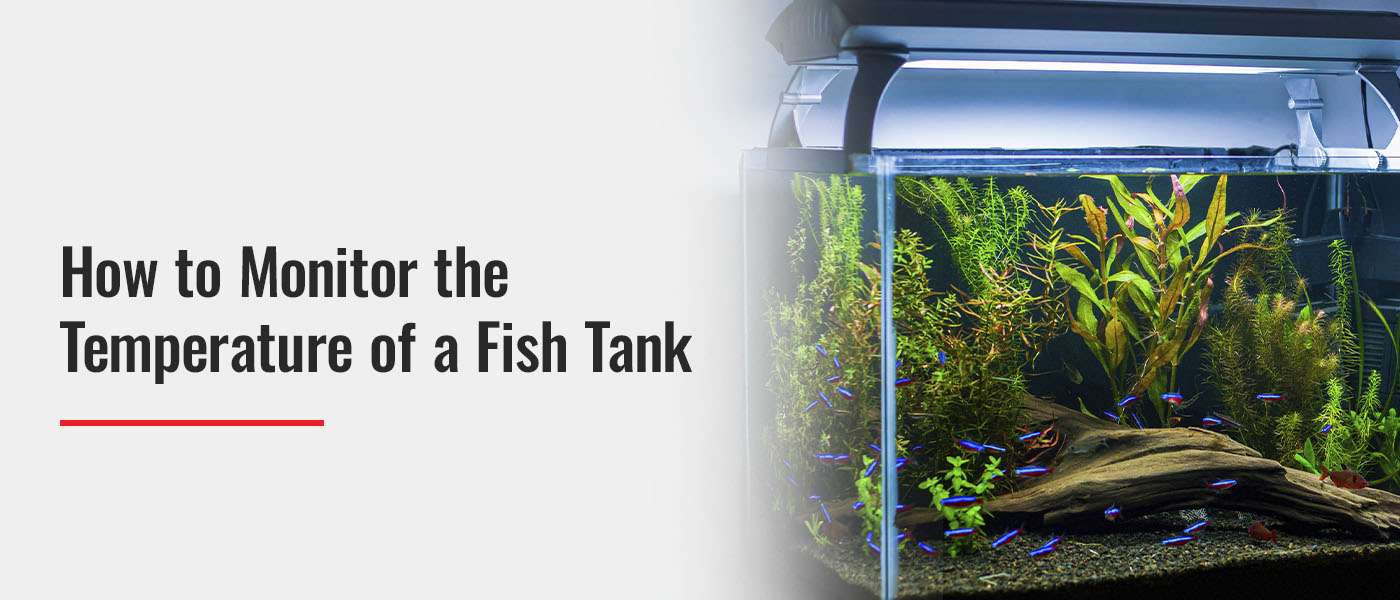How to Monitor the Temperature of a Fish Tank
Maintaining the temperature of your tank supports the well-being of your fish. Understanding how to monitor and control temperature changes is the first step to creating an environment for your fish to thrive. This task can be challenging when you’re unfamiliar with temperature control techniques or devices. With several devices on the market, each with different capabilities, you might wonder which one will suit your needs. That’s why we’ve compiled a guide explaining how to maintain the water temperature in your fish tank.
What Temperature Should a Fish Tank Be?
The best temperature varies depending on the type of fish you have. Most freshwater fish, like cichlids, do well in the temperature ranges of 70-85℉ (21-29℃). These ranges regulate their immune systems, encourage breeding and reduce stress. Here are the specific needs of different species.
- Goldfish: Goldfish can tolerate temperatures between 65-75℉ (18-24℃). They are not as sensitive to temperature changes as tropical fish, but they still need a stable environment.
- Tropical fish: Tropical fish, like angelfish, thrive in warmer water, so it’s best to keep the temperatures between 75-80℉ (24-27℃). Consistent ranges are best so that they can remain healthy and active.
- Betta fish: These popular and colorful fish require little care and prefer temperatures between 76-82℉ (24-28℃).
- Tetras: Tetras, including neon and cardinal tetras, thrive in ranges of 70-81℉ (21-27℃).
- Zebra danios: Like goldfish, zebra danios can thrive in wide temperature ranges. The ideal condition for these active swimmers is 64-77℉ (18-25℃).
- Mollies: Mollies are versatile and can adapt to both freshwater and brackish water conditions. Their ideal range is 75-80℉ (24-27℃).
- Saltwater fish: Saltwater fish prefer temperatures between 75-80℉ (24-27℃). Like tropical fish, they are sensitive to temperature changes. Fluctuations can weaken their immune systems and overall health.
Why Is It Important to Monitor Water Temperature?
Fish are cold-blooded, so they can’t adjust their body temperatures to adapt to environmental changes. When they are exposed to temperatures outside their comfort zone, they might undergo distress. You might notice changes in their health and other telltale signs like lethargy, loss of appetite and unusual swimming patterns. Here are other reasons why you should monitor water temperature.
Reduces Stress
Stress can weaken fish’s immune systems, make them more susceptible to disease and cause them to behave erratically. Stable temperatures help regulate fish’s stress levels, which can keep them healthy.
Reduces Shock
Sudden temperature changes can shock fish, which can lead to severe health issues or death. Keeping the temperature consistent provides a safer habitat for your fish.
Encourages Breeding
Many species require specific temperature ranges to breed successfully. Maintaining the right temperature encourages spawning and healthy offspring development.
Reduces Parasitic Infections
Some parasites thrive in specific temperature ranges. If the temperature drops or rises to a point where it accommodates their development and spread, it can lead to parasitic diseases, like cryptocaryon and trichodina. Common signs of infection are white spots, rapid breathing and excess mucus production. Monitoring and regulating the tank’s temperature manages parasite populations.
Regulates Oxygen Levels
Temperature can affect how much oxygen dissolves in water. Warmer water creates a lack of oxygen, which results in fish swimming or gasping for air at the tank’s surface. Proper temperature control allows for constant oxygen levels, which supports the respiratory needs of your fish.
5 Tools for Fish Tank Temperature Control
You can choose various tools to keep your fish tank at the right temperature. Some allow you to submerge them directly into the tank, while others can be positioned on top of it. Here are five tools to get started.
Air Conditioner
If you’re concerned about ambient air, an air conditioner can help cool or warm a room housing the fish tank. Air conditioners are fantastic for larger or warmer environments. The downside to this option is that they don’t provide accurate temperature controls specific to your fish’s needs.
Heater

Aquarium heaters maintain the temperatures of freshwater and saltwater tanks. They come in various designs, like submersible and inline models, and allow you to set and maintain a stable temperature with built-in thermostats. The only drawback is that you’ll need to monitor or calibrate them often to ensure they’re working correctly. This approach can be inconvenient when you have work or travel commitments that prevent you from adjusting the temperature when needed. Heaters are also not energy efficient, so they can add to your electricity bill.
Cooling Fan
Cooling fans are positioned to blow over the water at the top of the tank, increase evaporation and prevent overheating. Because cooling fans increase the rate of evaporation, especially in summer, this often results in a decrease in water levels. Decreased water levels can increase salinity levels and stress your fish. To counteract this effect, you might need to install an automatic top-off system (ATO). An ATO detects a drop in water levels and activates a pump to fill the tank with fresh water, which regulates salt levels and ensures your fish’s water is as clean as possible.
Pairing a cooling fan with ATO can be expensive because you’d have to buy separate devices to help regulate the water temperature.
Chiller
Chillers are cooling systems that lower and maintain tank temperatures. They are ideal for large tanks because they circulate the water without disrupting your fish’s activities. This process keeps temperatures between 65 and 80℉ (18-27℃), which creates an ideal environment for most types of fish.
Fish Tank Temperature Sensor
Temperature sensors provide real-time data, and you can integrate them with alarms to alert you of extreme temperature changes. They come in digital and analog forms, and you can use them with other temperature control tools for precise readings. Some temperature sensors pair with your mobile device and allow you to control the tank’s temperature anywhere. If you can’t physically tend to your fish tank, you’ll rest assured knowing your fish are in a safe environment.
Contact Wayne Alarm Systems for Temperature Monitoring
Maintaining the perfect temperature for your fish starts with understanding the ideal ranges for them to thrive. Lexington Alarm Systems offers temperature sensors you can connect with your temperature control tools to safeguard your fish. We offer customizable hardwired and wireless monitoring solutions for your home or business needs. Our products include advanced sensors and alarm systems that notify you of any changes in water temperature. This ensures your fish tank remains at the ideal temperature to give you peace of mind.
To learn more about how we can help monitor your fish tank’s water temperature, contact Wayne Alarm Systems today and request a quote for reliable temperature monitoring.




